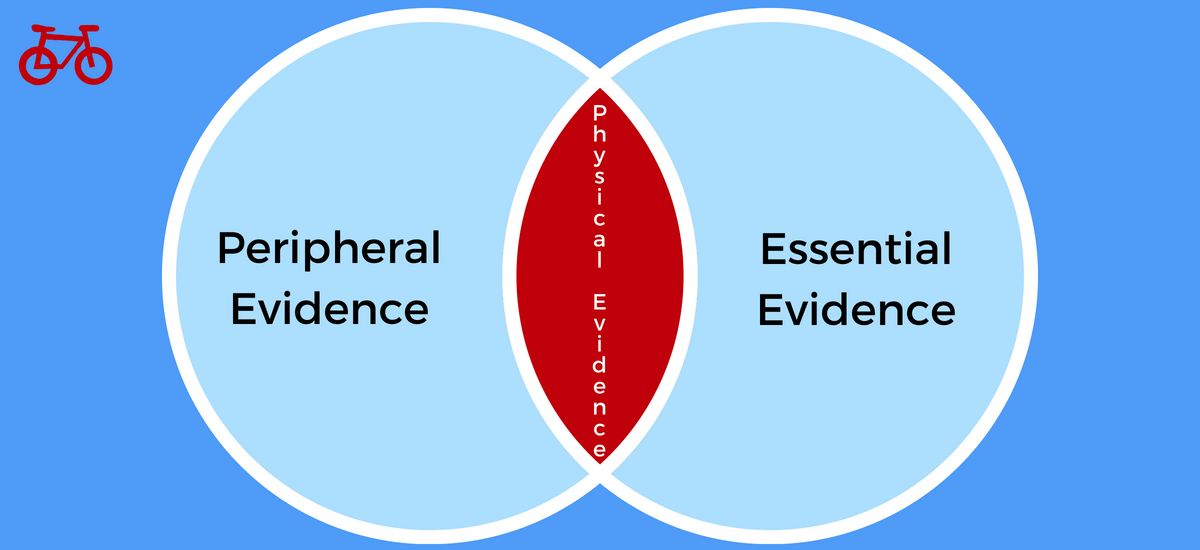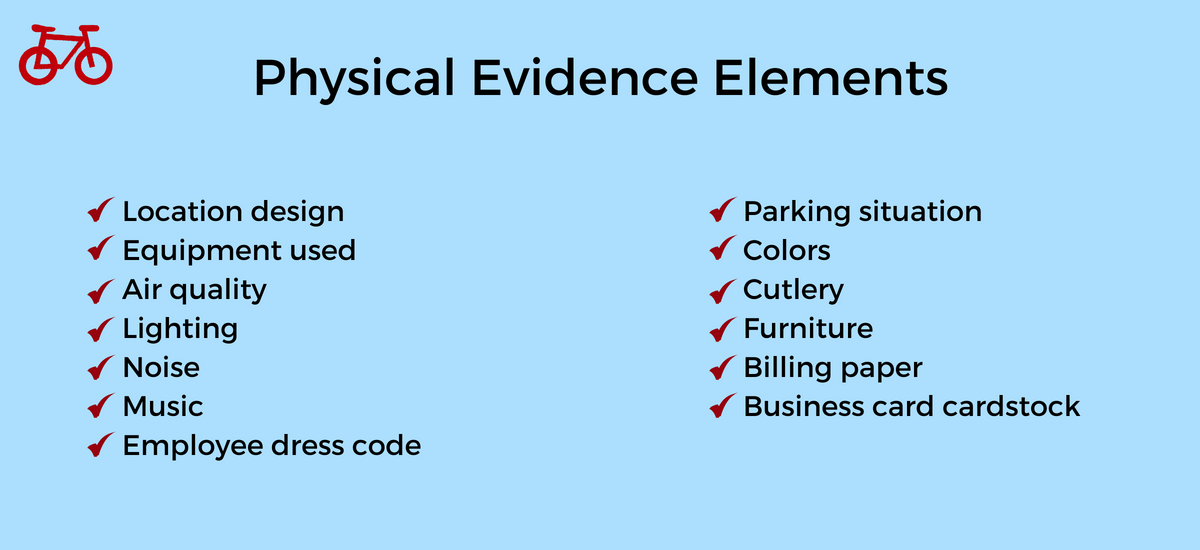Physical evidence is one of the components of the 7Ps model of the marketing mix. While it is primarily associated with service products, its concept can be increasingly applied to physical products.
Physical evidence is the component of the 7Ps marketing mix that deals with everything about the location and environment that a product is consumed in.
Here, we will take a look at physical evidence as a component of the marketing mix in detail.
What is Physical Evidence?
As a component of the marketing mix, physical evidence is the location and environment where the customer purchases and/or consumes the product. It is the environment where the company and customer interact in the exchange of the product.
Originally, this was most pertinent to service products, but the lines have become blurred between service products and physical products. Companies of both service products and physical products want to control the physical evidence of the product, as it contributes to the overall customer experience.
It is a way to control and add value through the presentation of intangible elements of a product.
Types of Physical Evidence
Physical evidence is the process by adding value to the intangible aspects of a product and there are two types. There is peripheral evidence and essential evidence.

Peripheral Evidence
Peripheral evidence is part of the purchase process, but has little value of its own. It is the additional aspects of the product which contribute to the overall purchase process.
This can be simple things like napkins used in a restaurant, cardstock used for receipts or product information, or the packaging of a product.
Peripheral evidence, on its own, has very little merit. But, if used in conjunction with the product or service, it can add value to the intangible elements of a product or service.
Essential Evidence
Essential evidence, in contrast to peripheral evidence, is the products, components, or elements used by a company to execute their product.
For example, this can be the ingredients that a restaurant uses in its food. It can be the linens, towels, and hotel provided toiletries a hotel might provide. Also, it could be the types of products a rental company provides when lending out their rentals.
Essential evidence is not necessarily possessed by the customer, but it contributes to the perception of value of a product or service. Essential evidence is one of the most important factors when designing the physical evidence component of the marketing mix.
Addressing the types of physical evidence is how you create a holistic approach to this component of the marketing mix. It is a component that provides value by having an attention to detail.
Components of Physical Evidence
There are various components to physical evidence. These are the areas that you should consider when building this area of the marketing mix.
The components here are the overall considerations to be made when thinking about this part of the marketing mix. Some of the components are:

Physical Environment
Physical environment is the location and surroundings the customer is in when the product is consumed. This is an essential component of physical evidence. It can set the tone, mood, and is a high contributing factor in the perception of value.
Some elements of the physical environment can be the ambiance, layout, and any other environmental factors. Paying special attention to the physical environment of where the product or service is consumed is an important factor in creating the perception of value and your brand.
Spatial Layout
Spatial layout is a component, which works in conjunction with physical environment. This is how the environment is setup.
For example, this is how a retail location moves customers through the store. This effects how customers purchase goods, as well as how they experience the product.
Ambiance
Ambiance is another component of physical evidence. It is a key factor in setting the mood of the physical environment. The ambiance factor will include things like lighting, music, employee dress, and many other peripheral evidence components.
Ambiance is how you put your buyer into the mood for the experience you would like them to have.
Corporate Branding
Branding is another component of physical evidence. This is a large factor in how a customer perceives your business. At times, branding falls within other areas of the marketing mix. But, it has a place in physical evidence because branding contributes to the intangible aspects of the customer experience.
Thus, brand helps to set the perception your customer has of your product.
Consistency
Consistency is a crucial component of physical evidence. You want a customer to know that when they use your product, there is an expectation of what they will receive. Then, consistency allows you to deliver on that expectation.
Consistency helps alleviate a large portion of the risk a buyer has in using a new product. Thus, making the purchase more likely to occur the first time, as well as subsequent times.
These components are how you think about implementing it as part of the marketing mix. It is how you structure your strategy and choose the tactics you are going to use.
Managing Physical Evidence
Physical evidence, and how you manage it, lies in the customers five senses. It’s really managing the customers five senses.
To manage it, you use all the components we discussed above to manage the sensory intake of customers. What the customer experiences from this perspective largely depends on what you provide for their senses.
Elements of Physical Evidence
There are various elements of physical evidence you can use to create the desired environment for your customers. The elements are what makes up the components of physical evidence. These are the items you can use to control and manage the senses of your customer.
A few elements of physical evidence are location design, equipment used, air quality, lighting, noise, music, employee dress code, parking situation, colors, cutlery, furniture, billing paper, and business card cardstock.

These are just a few of the elements that can be controlled when building the physical evidence component of the marketing mix.
Each element has a place. They all contribute to creating an experience for the customer. Deciding which elements fit with your business allow you to decide which items to focus on. Then, you can create the physical evidence component of your marketing mix.
Creating an experience for your customer helps deliver and explain value with many intangible aspects of product consumption. Physical evidence is a crucial strategy in accomplishing this. While primarily associated with service products, this can be applied to physical products as well.
Physical evidence as a component of the marketing mix is one component to address when looking at how your product is consumed.
